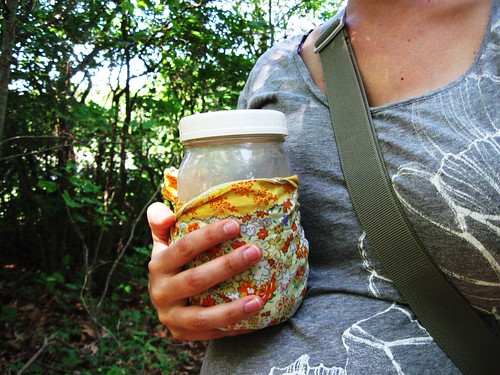A number of herbs that are excellent for supporting physical and emotional well-being also can be safely taken by the breastfeeding mother during the postpartum period. Indeed, several such herbs actually help support breast-milk production and quality. Herbs that are nourishing sometimes are known as nutritive or tonic herbs; those that support the nervous system, helping to relieve stress and tension, are called nervines; and those that promote breast milk are referred to as galactagogues. One of the beauties of herbs is that one plant can have many actions and serve many functions.
Nutritive (Tonic) Herbs: Good for Nourishing- Ashwaganda (Withania somnifera). An herb from the tradition of Indian Ayurvedic medicine, ashwaganda enjoys wide acceptance in the U.S. herbal community to help adapt to stress; thus, it is classified as an herbal adaptogen. Adaptogens gently support the adrenal system, reducing irritability and jangled nerves, while serving as a gentle support to the immune system. Ashwaganda generally is taken as a tincture or as a tea with a small amount of milk and honey. Dose: 1/2 to 1 teaspoon tincture twice daily; 1 to 2 cups tea daily.
- Gotu kola (Centella asiatica). This is another herb that comes to us from Ayurveda. It is known both as a tonic for connective tissue (making it excellent to include in formulas for restoring uterine ligament tone) and as an excellent nervous system and cerebral tonic. As such, it’s said to reduce nervous exhaustion and promote mental clarity. Use it in teas or take as an herbal tincture. Combine with ashwaganda or any of the nervines described below to benefit the nervous system.Dose: Same as ashwaganda.
- Hawthorn berries, leaves and flowers (Crataegus spp.). Typically, hawthorn is used as a heart tonic, and indeed it provides many benefits to the cardiac system. I frequently blend the berries, leaves and flowers in formulas for stress reduction and use the herb as an overall gentle tonic. Hawthorn combines well in teas with lemon balm (Melissa officinalis), rose hips (Rosa spp.) and spearmint (Mentha spicata), making a flavorful and refreshing beverage and medicine. Dose: 1 teaspoon tincture twice daily; 1 to 2 cups tea daily.
- Milky oats (Avena sativa). These make a nourishing tonic for the nervous system. Oats themselves have long been used as a healthful food for mothers and children — they’re very high in vitamins and minerals. Oats also are known to provide vigor and energy to horses. In the form of a tincture of the fresh, milky seeds of the plant, a new mother can take oats over a long period, even many months, to provide gentle calming effects. Dose: 1/2 to 1 teaspoon tincture one to three times daily.
- Nettle (Urtica dioica). This herb is particularly nutritive, containing trace minerals and vitamins, especially iron, potassium and silica. The herb is used to treat anemia and weakness and to stabilize blood sugar. It’s especially called for if you’re feeling stressed or physically or emotionally drained. Nettle tea is delicious alone or in combination with other herbs, such as alfalfa (Medicago sativa) or spearmint. Dose: 1 to 3 cups tea daily. Prepare by steeping 1/2 ounce dried herb per 2 cups boiling water for 30 minutes.
- Red raspberry leaf (Rubus idaeus). Known mostly as a prenatal tonic, this actually is a general nutritive herb that makes an excellent tea. It’s rich in minerals, tones the uterus and is a pleasant addition to teas. Combines well with nettles, mint, rose hips and many other beverage herbs. Dose: Same as nettle.
- Ashwaganda.
- Catnip (Nepeta cataria). This herb’s gentle but reliable relaxing qualities make it an appropriate nervine for new mothers, and these qualities, much as with chamomile, lavender and other aromatic herbs, are imparted to the baby, helping reduce colic and fussiness. Its mild taste enhances a tea, but it’s also effective in tincture form. Dose: 1 to 4 cups tea or 1/2 to 1 teaspoon tincture three to four times daily. Prepare by steeping 1 tablespoon dried herb in 1 cup boiling water for 10 minutes.
- Chamomile (Matricaria recutita). This herb relaxes the mother, and through the breast milk, provides gentle relaxation to the baby. Taken by the mother, it also can help allay milk colic symptoms in the baby. Although you can take chamomile as a tincture, it’s best to drink as a tea, steeped for only 10 minutes to ensure a pleasant flavor. Drink throughout the day or shortly before bed to promote restful sleep. Dose: Same as catnip.
- Lavender (Lavandula angustifolia). This lovely herb lends itself well to teas and can be used in tinctures. Both forms provide deep but gentle relaxing actions for the nervous system. It’s beneficial when there is difficulty sleeping. Dose: 1/2 teaspoon tincture one to three times daily; tea, same as catnip.
- Lemon balm. Classically known as the “gladdening herb” because of its uplifting effects on the mood and emotions, it’s a gentle nervous system tonic, typically used as a tea. Its delicate lemony flavor blends well with other tea herbs, and when used by breastfeeding mothers, its calming effects are conveyed to the baby through the breast milk. Dose: Same as catnip.
- Milky oats.
- Skullcap (Scutellaria lateriflora). Use skullcap short- or long-term to support the nervous system, reduce tension, promote restful sleep and treat irritability. It’s also helpful for mild forms of postnatal blues, the result of inadequate sleep, exhaustion and overstimulation. Generally taken as a tincture, it combines well with many other nervines and tonics. Dose: 1/2 to 1 teaspoon tincture two to four times daily.
Galactagogues: Breast-milk Promoters
- Blessed thistle (Cnicus benedictus). This herb has a long history in promoting breast milk in new mothers. It also has properties that help allay uterine bleeding, making it an all-around beneficial herb for the postpartum mother in the first few weeks. It can help offset mild irritability and also is a good general digestive tonic, particularly when there is sluggish digestion. This herb is bitter, so take a tincture rather than a tea. Dose: 1/2 teaspoon tincture three times daily.
- Dandelion leaf (Taraxacum officinale). Much like nettle, this is a highly nutritive green plant, rich in trace minerals and iron. The best way to take dandelion leaf to promote breast milk is as a fresh green vegetable cooked with a bit of lemon and butter for flavor, taken several times per week. The fresh spring greens are the least bitter and are quite delicious. Use in tincture form for treating constipation. Dose: 1 teaspoon tincture twice daily.
- Fennel (Foeniculum vulgare). Another herb classically listed among those that promote breast milk, fennel has a mild, pleasant taste. It makes a palatable tea, or use it as a flavoring for other, more bitter tinctures for promoting milk. Dose: 1 to 2 cups tea daily. To prepare, steep 1 teaspoon seeds in 1 cup boiling water for 10 minutes.
- Fenugreek (Trigonella foenum-graecum). This herb has long been used to encourage milk production. Take it as a warm tea while trying to establish or improve the milk supply. You may take it alone or in combination with other galactagogues and nervines, and it also may be used in tincture form. Dose: Same as fennel.
- Nettle. This is perhaps my favorite herb to use for enriching and enhancing breast-milk production, while providing optimal nutrients and energy for the mother. I often recommend it in large quantities — as much as 1 quart of strong tea daily — as an adjunct part of the diet, but even a cup or two daily, several times a week, will bring significant benefit to the overall well-being of the mother. Nettle also can be eaten as a fresh green, but be careful of the sting during preparation. Cooking destroys the sting.
Paying attention to nutrition during pregnancy can be time-consuming and exhausting, as you try to eat carefully to ensure your baby’s proper growth and development. Many women find this awesome responsibility almost overwhelming and are relieved when pregnancy is over and they can go back to eating “normally.” However, nutrition during breastfeeding is also important. William and Martha Sears, in The Breastfeeding Book (Little Brown & Co., 2000), sum up nutrition and breastfeeding this way:
During lactation, as during pregnancy, your body nourishes your baby’s body. Just as your blood carried the nutrients your baby needed to grow and develop in the womb, your milk furnishes all the nutrients your baby needs after birth. Mothers over the world make good-quality milk for their babies, many of them with less than adequate diets for themselves . . . A mother’s body guards valuable nutrients during pregnancy and lactation. Calcium, for example, is absorbed more efficiently and less is excreted. There’s no need to obsess about having to eat ‘just right’ while breastfeeding. In a nutshell, good nutrition while breastfeeding means eating foods that are good for you — and a bit more than you would normally consume.
During the first few days postpartum, you have unique considerations. First of all, many women are nervous about having a bowel movement soon after birth. Avoiding constipation and difficult elimination is the key to healthy digestion. Eat plenty of fruits and vegetables, drink ample quantities of water and keep away from hard-to-digest foods, such as peanut butter, dairy products and red meat (with the exception of red meat cooked in stews). Raisin bran muffins made with blackstrap molasses are a natural laxative, as are stewed or soaked prunes.
Although pregnancy is a natural process, it still puts strain on your body. The body also needs to expend energy for healing after birth, and if there has been significant blood loss, iron and other nutrients must be replaced. Furthermore, breast milk production, believe it or not, requires even greater caloric intake than does pregnancy. This is because you are continuing to provide primary nourishment for a rapidly growing baby undergoing not only enormous physical development, but also tremendous brain development in the first six months after birth.
Traditional foods for women in the immediate postpartum period are amazingly similar cross-culturally. Foods typically include soups or stews with grains (for example, barley stew); meat and vegetable soups (like chicken soup); plenty of eggs, chicken and grains; and starchy vegetables (sweet potatoes, winter squash). Fruits in season may be encouraged as well. Cooked raisins and jujube dates feature prominently in the dietary recommendations for Chinese women who recently have given birth. Such foods nourish the blood, while the protein in them helps with the speedy and effective repair and replenishment of body tissue.
Avoid foods that might irritate the breastfeeding baby, including spicy foods and vegetables in the cabbage family, as well as foods that might inhibit elimination in the mother.
Returning to Your Healthy Weight
This is definitely not an appropriate time to diet. Your body, especially if you are nursing, naturally will lose weight after birth. However, returning to your pre-pregnancy size usually takes several months, at least. A healthy diet and moderate exercise over time will ensure this. Dieting only serves to deprive you and the baby of essential nutrients. If you have gained excessive weight during pregnancy, or simply want to be more trim than you are now, having just given birth, an excellent balanced diet is the best way to meet your goals. If weight or body image are of significant concern to you, speak with your doctor or midwife for information on how to eat right for breastfeeding, or seek the assistance of a qualified nutritional consultant. Adjusting your diet to include healthful, high-quality foods protects your nutritional status, allows you to produce abundant milk and helps get your weight under control.
Excerpted from Natural Health after Birth (Healing Arts Press, 2002) by Aviva Jill Romm
http://www.herbcompanion.com/Health/Heroic-Herbs-for-New-Moms.aspx
http://avivaromm.com/files/articles/pregnancy.pdf
http://avivaromm.com/files/articles/pregnancy.pdf




No comments:
Post a Comment